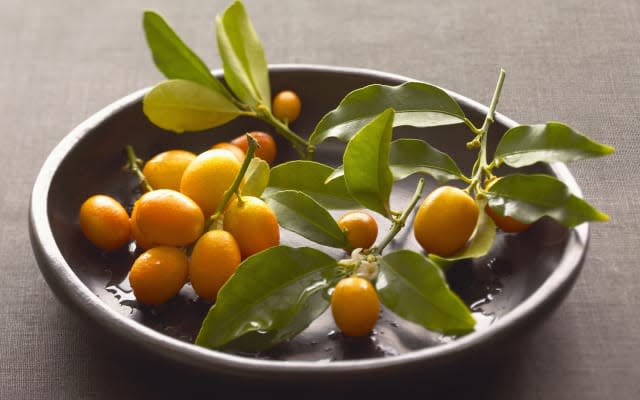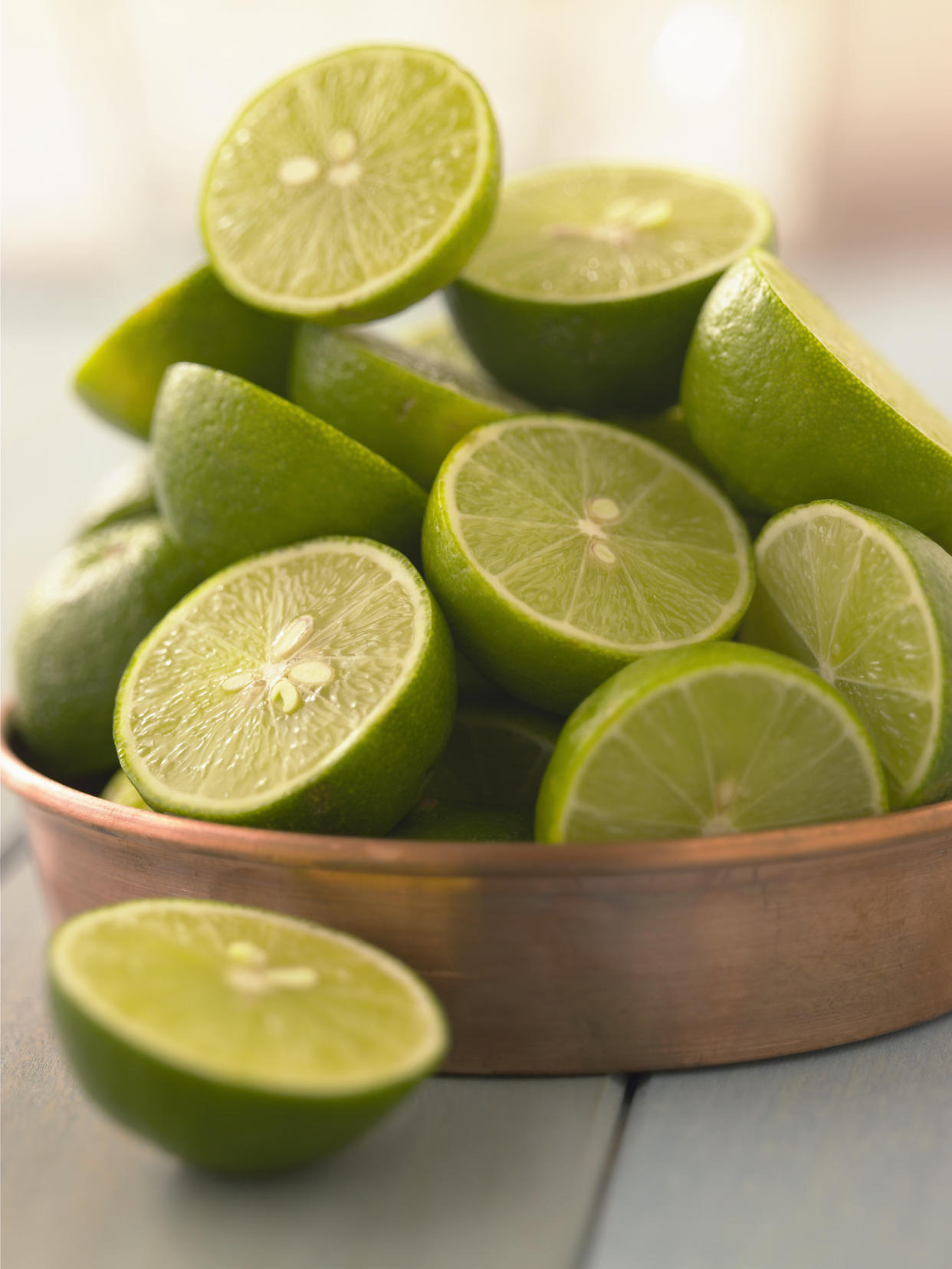A comprehensive guide to citrus fruits

Did you know that most citrus varieties originated in Southern Asia, but the breakfast staple sweet orange was popularized by the Spanish around the 1500's. What's more, many of the common grocery store varieties are actually hybrids, which is why you'll see an "x" in the Latin spelling of their species name. Read below for a comprehensive guide, wonderful recipes, and fun facts about citrus fruits.

White Grapefruit ( Citrus x paradisi): More commonly available than its pink and ruby red cousins, white grapefruits are perfect for less showy uses like curd and marmalade. While the bright pink hue of a Texas grapefruit might be more appealing for mixed drinks and baked goods, this paler white version brûlées like a dream. Check out this recipe from TasteSpotting.

Clementine (Citrus x clementina): The absolutely perfect snack food and by far the least messiest citrus to peel. Paired with some cheese and a bit of crusty bread and your stomach is set. There are several conflicting stories about its origins, but I prefer the one about the Maghreb clergyman, Clement Rodier, who accidentally hybridized the fruit in the garden of his local orphanage.

Meyer Lemon (Citrus x meyeri): This particular variety of sweet citrus is believed to be a cross between a conventional lemon and a sweet orange and was first introduced to the U.S. by an early 20th century USDA employee named Frank Meyer. A favorite of Martha Stewart and of the Hysmith family of College Station, these little lemons are sweet enough to eat on their own and feature quite frequently in our family recipe for Lemon Scones.
(Citrus x sinensis): My new favorite fruit and currently fighting ruby red grapefruit for top place. This red-fleshed navel is a sweeter orange with low acidity. While a single Cara Cara can cost a few pennies more than its conventional counterpart, it is well worth it to make a pretty plate of neatly arranged slices sprinkled with pomegranate seeds.

Conventional Lime (Citrus x latifolia): Compared to the other citrus varieties in this study, the conventional lime might seem a little boring, but just think of the possibilities! First off, margaritas. Logically, the list should end right there, but I'll keep going. Gimlets, Lime Rickeys (the coolest thing about New England thus far), the perfect twang to a plate of sizzling fajitas, and don't forget that limes helped many a marine prevent scurvy! Conventional grocery store limes may vary, but a commonly available species is the spicy, thick-rind Persian lime. Perfect for cumin and jalapeno spiked 'ritas.

Moro Blood Orange (Citrus x sinensis): The dark-hued and counter-staining cousin of the sweet orange, the blood orange is a slightly smaller citrus with additional flavor notes of ripe berries. The Moro variety is considered to be the most vibrant hued of all the known blood oranges. With a slightly higher price-point, the blood orange is best reserved for opportunities of presentation like brightly arranged salads, homemade Italian sodas, and topping baked goods.

Kumquat (Citrus japonica): Hands down the most hilarious citrus name ever. Originally native to Southern Asia, these little olive-shaped fruits grow on small slow-growing trees. There are half a dozen varieties of kumquats each with a different scientific name and unique shape. The fruit can be eaten whole (like a grape) or sometimes the rind is preserved like lemon peels or in marmalade. They are a pain to slice, so stick a toothpick in them and revamp the classic martini garnish.

Conventional Lemon (Citrus x limon): One of the most important things I learned about cooking from my mother is to always have lemons on hand. A plain ol' conventional lemon adds just the perfect touch to grilled meats, a little zest to simple baked goods, spices up a glass of water, and pretty much cures whatever ails you. A staple flavor in so many world cuisines, the lemon is an ingredient powerhouse. Not to mention it can disinfect your counters and its acid can power a small watch.

Tangerine (Citrus tangerina): Closely related to a Mandarin orange, the tangerine is sweet, small, and similar in taste to the cute little clementine. The fruit's name is said to derive from its popular growing place, Tangiers. You can use the tangerine like you would the clementine, but it is best known for its colorful rind which perches perfectly on cocktail rims, drapes dramatically over baked goods, and takes steamed rice to a whole new level.

Key Lime (Citrus auratifolia): This little, spherical fruit has a thinner rind than the conventional lime and is most often associated with the Florida Keys and their delectable gift to the human palate, the Key Lime Pie. The Key Lime has a tarter, more bitter flavor and typically comes packed in a bag with a dozen other little limes. They sometimes even print the recipe for the aforementioned pie right on the bag. Good marketing.

Ruby Red Grapefruit (Citrus x paradisi): Saving the best for last, the Ruby Red Grapefruit is the best citrus of all the citrus, true story. Originally confused for its ugly relative, the pomelo, the grapefruit traveled from the Caribbean to Florida after which it made it's way to Texas in order to become the citrus to lead all other citrus. After an ample application of blush, the ruby red grapefruit made its debut in the early 20th century and quickly became the feature flavor in things like Paloma cocktails, breakfast sideboards, and these lovely Ruby Red Grapefruit Squares.
Armed with this knowledge, go forth and get your citrus on. There are so many more varieties to explore, so let me know what you have in your neck of the woods.
Read more.
Related Video: The benefits of cooking with citrus

More from the Young Austinian:
12 essential utensils you need in the kitchen
Outfitting the kitchen
How to plant succulents for the kitchen







